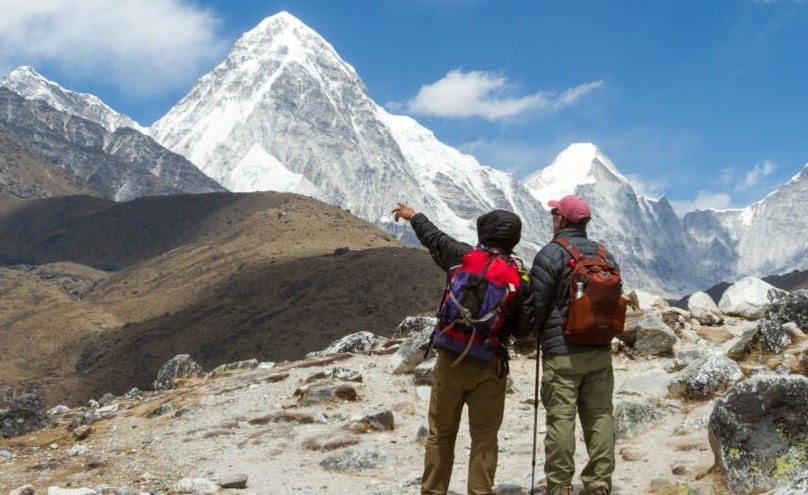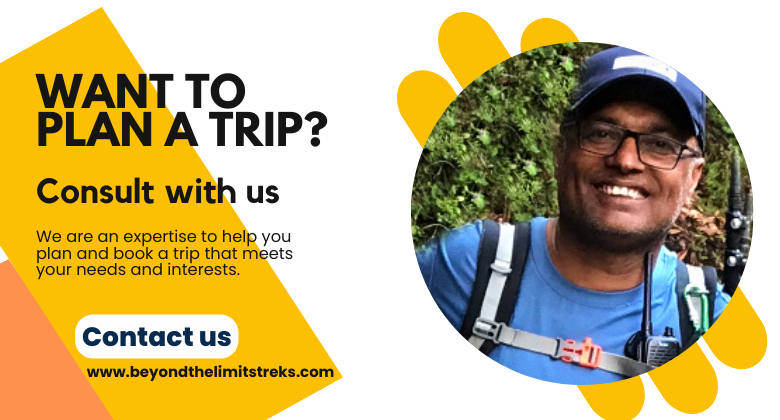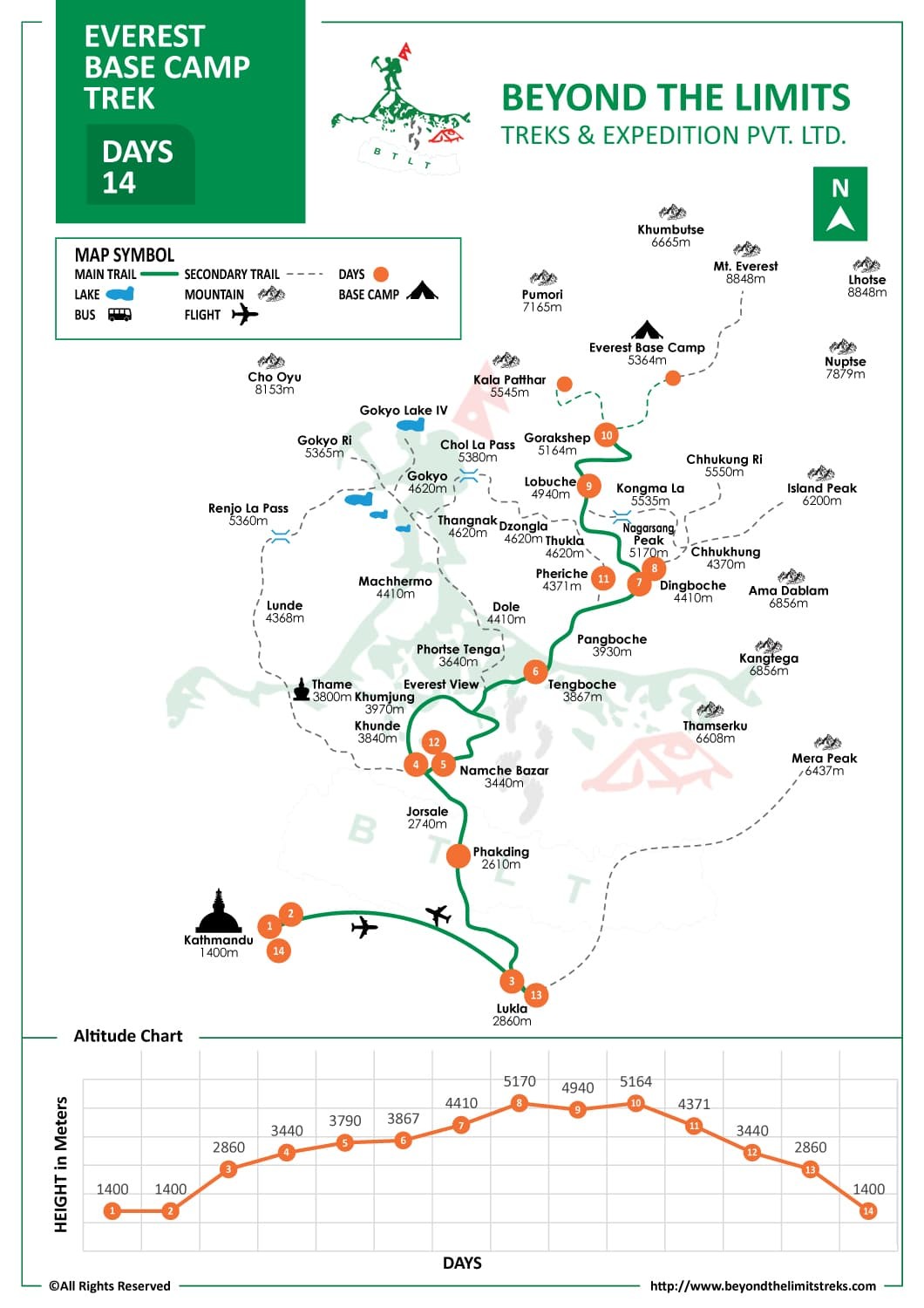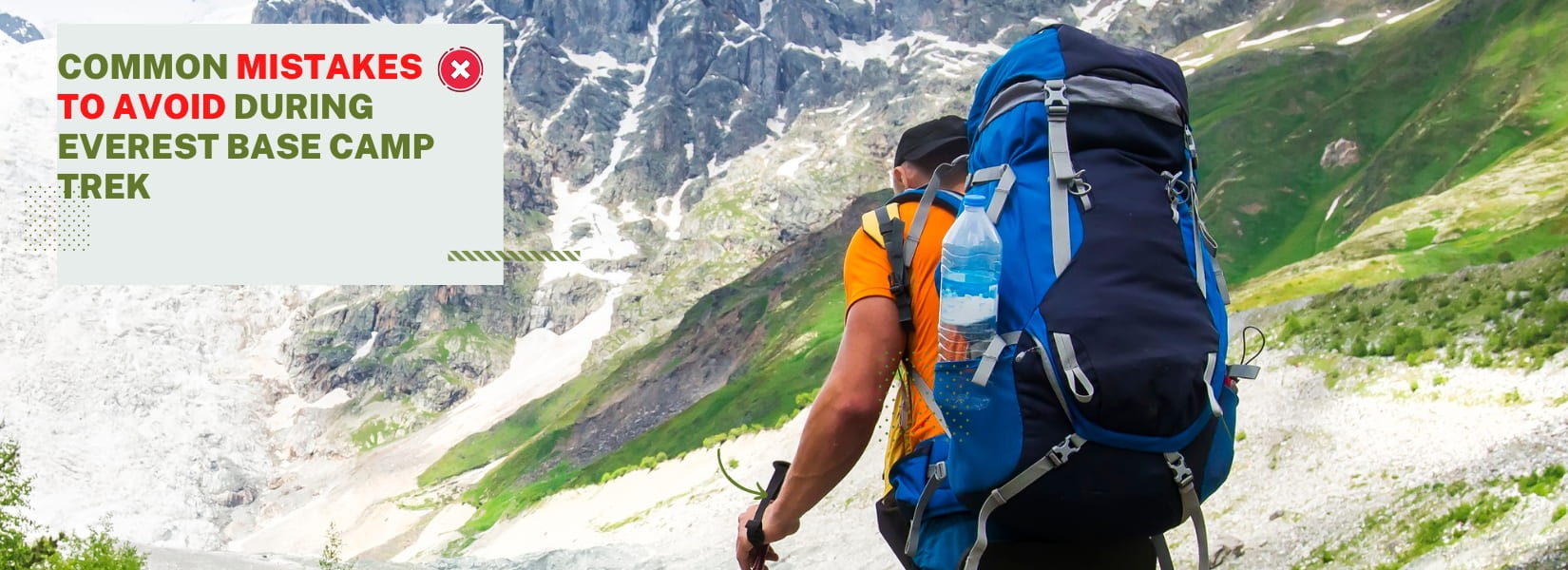Trip Highlights:
- Unobstructed panorama of Everest, Khumbu Glacier, and surrounding Himalayas.
- Sunrise view from Kalapathar.
- Trekking through the trails adorned by wildflowers and rhododendrons.
- The hospitality of the ethnic community.
- Visiting old monasteries of the region: Tengboche Monastery.
- Hiking up to the Everest View hotel to enjoy the 360-degree view of Everest while enjoying a cup of coffee.
- Namche Bazar, the intoxicating town located amidst the Himalayas

📌 Loving the way the EBC sounds? Book your trip now Everest Base Camp Trek
Safety of Trekkers During Trek:
There's no doubt that the trek to the Everest base camp is a once-in-a-lifetime trekking experience. Hence the trekkers try their best not to ruin the trip and make it to the summit. However, trekking at a higher altitude means trekkers are constantly exposed to several hazards like natural, health, and other unspecified hazards.
While natural hazards are unavoidable in many circumstances, other kinds of hazards can be reduced by following the safety measures mentioned by your trekking guide. Even a minor negligence can cripple you or lead to a life-threatening event. Hence, at Beyond the Limit Treks and Expedition, we take the safety of our trekkers seriously.
Making the safety of our trekkers our priority, our Senior Guide, Jeet Bahadur Romba has listed a few of the things to avoid during the EBC trek.
Common mistakes to avoid during the Everest Base Camp Trek to make your trip memorable & successful:
✔ Trekking without a guide:
Although the idea of solo trekking into the Himalayas sounds adventurous, it is equally unsafe and problematic while you trek to a new area. From getting lost in the woods to the language barrier and having health hazards, novice trekkers may face several problems during the trek.
Hence, having a guide who will not only give you company but also take care of you and share important details of the place is way more comforting and safe.
✔ Skipping acclimatization:
The Everest base camp trek itinerary has 2-3 acclimatization days in between the trek. The acclimatization days are added to the itinerary to allow your body to adjust to the increasing altitude. Thus, skipping any of it will put you at risk of altitude sickness and other health issues.
Therefore, make sure to stick to the original itinerary, take a break when you feel uneasy, and ask for help from your guide in case you feel uncomfortable.
✔ Skipping meals:
Maintaining a balanced diet is another major thing to consider while trekking. Skipping meals, eating meat, and drinking alcohol are things that you should avoid during the trip.The food prepared on the trail is hygienic and has all the nutrients required for you to complete the trek. You will be given a wide variety of choices from curries, noodles, the rich Nepali staple Dal, Bhat, Momos, pancakes, and other items for breakfast, lunch, and dinner. Savoring three meals containing protein and vitamins will provide the necessary energy for a long day's walk. While eating a meal is essential, having a good night's sleep is equally crucial for trekkers. So make sure you are in bed on time and wake up early for the walk.

✔ Moving too fast at a high altitude:
The most common mistake a trekker can make during the trip is moving too fast. As the altitude increases, the oxygen supply decreases. Hence moving quickly at a high altitude means you might have shortness of breath and show symptoms of altitude sickness like dizziness, fainting, and vomiting. Therefore, trekkers must learn the simple phrase, slow and steady wins the race. Remember, trekking is not about covering the distance in a short time but about reaching your destination safe and sound.
✔ Overpacking or underpacking:
We go by a simple rule less is more to answer our guests' queries about what to pack for the trip. We all have a habit of overpacking while planning our trip, but it is time to break the habit and pack as much less as you can.
As you will be walking continuously for days through the diverse terrain, carrying a heavy bag pack will be much more tiring. Hence, follow the packing checklist provided by the trekking company and pack the necessary things only. The list includes layers (base, middle, and outer layer), breathable undergarments, snacks, toiletries, medicine, waterproof trekking boots, socks, sleeping bags, sunglasses, sunscreen, hats/beanies, etc. Hence, check before you packing and pack wisely before you suffer on the trail. In case, you overpack hire a potter or ask your guide to help you out with the baggage.
✔ Trekking in normal shoes:
As you will be walking through the rocky, steep, and rugged trail throughout the trip, trekking in normal shoes means you will get several painful blisters enough to ruin your trip. Thus, find the perfect trekking shoe with grippy grooves that support the ankle. A shoe with soft bottoms will make your walk comfortable and keep your foot safe from blisters. Another important thing to remember is to trim your toenail before the trip, as the nail will get squished inside the boot leading to bleeding.
✔ Not drinking enough water and drinking from an unknown source:
It is not just one but two different things we can see on the trail. The trekkers do not hydrate as much or drink directly from the tap or stream water as the locals do.
However, the water consumed by the villagers may not be suitable for trekkers who have consumed filtered water throughout their lives. The tap or stream water in the upper region contains germs that can upset your stomach and cause cholera and diarrhea. The cost of a liter of mineral water is three times more than what you get in Kathmandu. Hence, packing water purification tablets is the best way to save money and keep yourself safe from stomach problems.
The water not being safe to drink directly from an unknown source does not mean you don’t hydrate yourself. Hydrating during trekking is crucial to replace the fluid you lose through sweating. Trekkers who fail to hydrate themselves may experience symptoms like dizziness, headache, and weakness. Therefore, hydrate yourself but not directly from the stream or tap water to avoid health hazards.
✔ Not applying sunscreen:
While many of you might say this is unnecessary, this is the best way to protect your skin from harmful sun rays. At higher elevations due to the thin atmospheric layer, the sun is much more powerful and can easily penetrate your skin and cause sunburn. The sunburn can be pretty harsh, resulting in blisters on the exposed part.
Hence, applying sunscreen containing UVA, UVB, and UVC protection will protect your skin, and SPF lip balm will protect your lips from the harmful effects of the sun.
✔ Not preparing well for the trek:
The treks in Nepal are categorized as easy, moderate, and challenging depending upon the altitude, weather, and days spent on the trail. However, many novice trekkers have completed treks that ranged from difficult to challenging. The key here is preparing the body well, following the itinerary with enough rest days, hydrating, eating well, and slow walking.
Most of the things mentioned here are what you do on the trail, but preparing your body well for the trip needs at least a month's training. Trekkers can do squats, stair climbing, lunges, and cardio exercises like cycling, swimming, and running to strengthen their muscles before the trip.
While physical training is one part, mental preparedness is another equally important part of preparing for the trip. You will undoubtedly face several challenges, but be positive and keep moving forward, looking at your goal.
Related Blog:
✔ Top 7 Best Treks in Everest Region
✔ Everest View Heli Tour
✔ Tips for a Successful Everest Base Camp Trek
Everest Base Camp Trek Map:

Conclusion:
Trekking in Nepal is probably the most rejuvenating activity. Hence, having prior knowledge about the place you are trekking to will allow you to enjoy every bit of it. If you are already planning your next trip to Nepal for the Ebc trek, this blog will help you avoid some common mistakes seen on the trail.
Here at Beyond the Limit Treks and Expedition, we offer several customizable packages that suit our guest's tastes. So, contact us to book your trip or to get further information about the trek.
Popular Everest Region Packages:
✔ Gokyo Ri Trekking
✔ Everest Three Pass Trekking
✔ Everest Circuit via Chola Pass
✔ Everest Base Camp Trek for Indian Passport Holder











